A new telescope takes advantage of modern manufacturing techniques to improve on a 341-year-old design and to target a wide variety of uses.
Vladimir Draganov and Pablo Bandera, fSona Communications Corp.
Most applications that use telescopes opt for one of two designs: the Gregorian or the Cassegrain. Of these two, the latter is most often used. A new telescope that improves on the Gregorian hopes to challenge that with a design that has applications in free-space optics, astronomy, and tracking and stabilization.
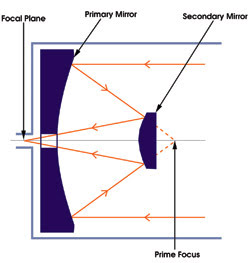
Figure 1. Invented in 1672, the Cassegrain telescope features a convex hyperbolic surface placed before the focal point of the primary mirror.
The staying power of the Gregorian and Cassegrain designs testifies to their genius. The Scottish mathematician James Gregory developed the Gregorian telescope in 1663. The French scientist and sculptor Guillaume Cassegrain invented the Cassegrain nine years later. Both are reflecting (as opposed to refracting) telescopes involving a primary and a smaller secondary mirror. In the Cassegrain, the secondary mirror is a convex hyperbolic surface placed before the focal point of the primary mirror (Figure 1). In the Gregorian, the secondary mirror is a concave ellipsoidal surface placed behind the focal point (Figure 2).
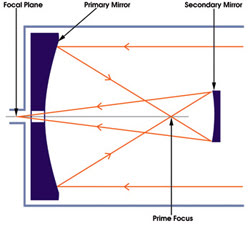
Figure 2. The earlier Gregorian telescope features a concave ellipsoidal surface placed behind the focal point, which offers several benefits but requires a much longer tube.
The different configurations yield different results. The primary and secondary mirrors in the Gregorian telescope are concave, allowing easier testing of both. This is especially important considering the dependence of a reflecting telescope’s performance on the quality and alignment of the mirrored surfaces. Also, the Gregorian does not invert the image, unlike the Cassegrain, which avoids the need for inverting optics.
Simple concept
Yet the Cassegrain design is the more popular one today because it is significantly smaller. Having its secondary mirror beyond the focal point of its primary mirror forces a Gregorian telescope to be almost twice as long as a Cassegrain. This is detrimental to the weight and stability of the structure, the power requirements of a drive mechanism and more.
Telescope designs have become increasingly complex in an effort to maximize performance, such as light-collecting power, thermal stability and precision, while minimizing the size and weight of the instrument. The patented “modified Gregorian” Compact Telescope from fSona Communications Corp. of Richmond, British Columbia, Canada, offers the advantages of the Gregorian in the size of a Cassegrain.
Modification to the traditional Gregorian design is fairly simple and elegant in concept but relies on state-of-the-art materials and manufacturing processes. The first step is to take a standard Gregorian telescope and to place a flat mirror approximately halfway between the primary and secondary mirrors. The next is to fold the entire system in half so that the flat mirror looks like a secondary mirror and the original concave secondary mirror is buried inside the primary mirror (Figure 3).
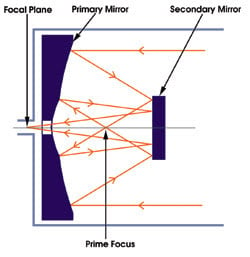
Figure 3. The modified Gregorian design combines the primary and secondary mirrors into a “double mirror” and adds a flat mirror. The length of the telescope is approximately half that of a standard Gregorian and two-thirds that of a standard Cassegrain.
In this design, the primary and secondary mirrors combine to form one “double mirror.” The length of the telescope is approximately half that of a standard Gregorian and two-thirds that of a standard Cassegrain. In fact, this telescope can be as short as one-seventh its own focal length, yet all the attractive features of the Gregorian design are maintained.
The benefits go beyond those of the Gregorian and Cassegrain combined. In the original designs, the concentric alignment of the secondary and primary mirrors is critical. Tight tolerances on this alignment increase manufacturing and assembly costs, and make the telescope more susceptible to thermal and mechanical variations. In the new design, the alignment of the flat secondary mirror is much more straightforward because it is insensitive to concentric alignment.
The design avoids the alignment process by relying on standard machining tolerances for parallelism. Moreover, the flat mirror is easier and less expensive to manufacture than a curved one. The alignment of the original curved secondary mirror is effectively ensured because it is machined with the primary mirror as a single part.
This feature is made possible by diamond turning, a single-point precision cutting process similar to lathing. It can produce high-quality optical surfaces on plastics, metals and crystals. With postpolishing, the surface quality of a fabricated part may be 10 to 20 Å — good enough for most applications from the ultraviolet to the infrared. The method can produce mirrors up to 1.5 m in diameter.
Diamond turning also enables the telescope to be machined out of a lightweight material such as aluminum, rather than glass. In this way, the mirror and its mount can be made as an integrated part, effectively combining optical and mechanical design into a single effort (Figure 4). Large, solid sections can be hollowed out to minimize weight, using supporting ribs or a honeycomb structure. Mounting features such as tapped holes and alignment pins can be integrated into the mirror substrate, eliminating the need for separate brackets, screws and other mounting parts.
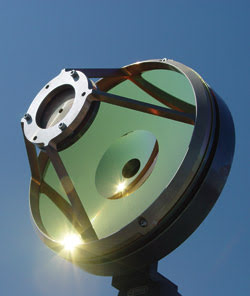
Figure 4. Modern diamond-turning technology enables the mirror and the mount to be machined as an integrated part in a lightweight material such as aluminum.
Matching the mirror material to that of the rest of the structure also matches their coefficients of thermal expansion. Thus, the telescope is completely athermal, without thermally induced aberrations or shifts in focus. This can be important in high-precision applications.
FSona designed the Compact Telescope for applications in optical wireless telecommunications, or free-space optics. In the current competitive telecom market, it is desirable to keep manufacturing costs low. Taking advantage of diamond turning to reduce the number of parts and to simplify assembly gives the instrument an advantage over standard designs.
Because free-space optics hardware typically is mounted outdoors on towers and rooftops and, consequently, exposed to all sorts of weather conditions, the ruggedness of the telescope’s combined optical/mechanical design is a benefit for this application. Moreover, being athermal allows reliable free-space optics links to be deployed everywhere from Siberia to South Carolina to Saudi Arabia.
The smaller size, lower weight and increased optomechanical stability of the telescope are advantageous for other applications as well. The military values these features in field-deployable systems for communications, surveillance or reconnaissance. The ability to carry equipment to a key location and the degree to which it stands out can be the difference between success and failure in certain missions. The same is true for disaster recovery applications, such as setting up communications links, surveying damaged areas or spotting trouble at a distance.
For airborne applications — and especially in space — payload size and weight translate directly into program dollars. For every pound that is shaved from a satellite, for example, thousands of dollars in fuel and propellant are saved. Every reduction in cubic inch of volume makes more room for other mission instrumentation.
A particularly cumbersome feature of airborne telescopes is the protective dome that must shield the optics from the environment. Its size is generally defined by the diameter and length of the telescope, and its function requires it to have a certain amount of rigidity and, therefore, weight. Obviously, the shorter the telescope, the better.
Making a telescope out of a single material — and thus creating an inherently athermal structure — lends it the kind of precision required for many astronomical applications. Moreover, as with the Gregorian telescope from which it was derived, the Compact Telescope does not invert the image, and it is naturally corrected for spherical aberration and coma.
Dynamic functionality
The telescope lends itself to another modification that turns it from a passive device into a dynamic mechanism. Because the secondary mirror is a simple, flat surface, it can be controlled in pan and tilt to steer the beam and to actively position the focal point. In other words, the stationary secondary mirror is easily replaced by a fine-steering or fast-steering mirror.
This enables the instrument to act as an active tracking device. Military applications include mobile surveillance, weapons target acquisition and reconnaissance. Astronomical applications include tracking deep-space objects or neighboring planets. And in the commercial world, there are uses in video surveillance and in the entertainment industry.
Similarly, by steering the beam to keep a focused spot on a detector, the telescope can be used for image stabilization. In this case, the feature is used to maintain alignment of the beam under the influence of external disturbances. Applications include mobile video and surveillance. It also is advantageous on airborne platforms such as unmanned aerial vehicles, on which optical devices must compensate for motion and for mechanical vibration.
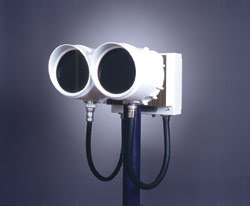
Figure 5. A prototype next-generation optical wireless transceiver uses the telescope design for active tracking and image stabilization, improving alignment between free-space optics systems.
FSona used the Compact Telescope for both active tracking and stabilization in its prototype of a next-generation optical wireless transceiver (Figure 5). To maintain a reliable communications link between two transceivers, they must be precisely aligned with each other along their mutual line of sight. External disturbances such as building motion or wind gusts can move a transceiver out of alignment, disrupting the link, so it is important to maintain alignment and to keep the incoming light beam focused on the detector. At the same time, the transmitted beam must be redirected along the line of sight toward the opposite transceiver.
In short, each transceiver must stabilize its own motion while tracking that of its counterpart. The advanced optical wireless system accomplishes both using fast-steering mirrors and the modified Gregorian telescopes.
Meet the authors
Vladimir Draganov is a senior optical engineer at fSona Communications Corp. in Richmond, British Columbia, Canada; e-mail: [email protected].
Pablo Bandera is technical marketing manager at fSona Communications; e-mail: [email protected].